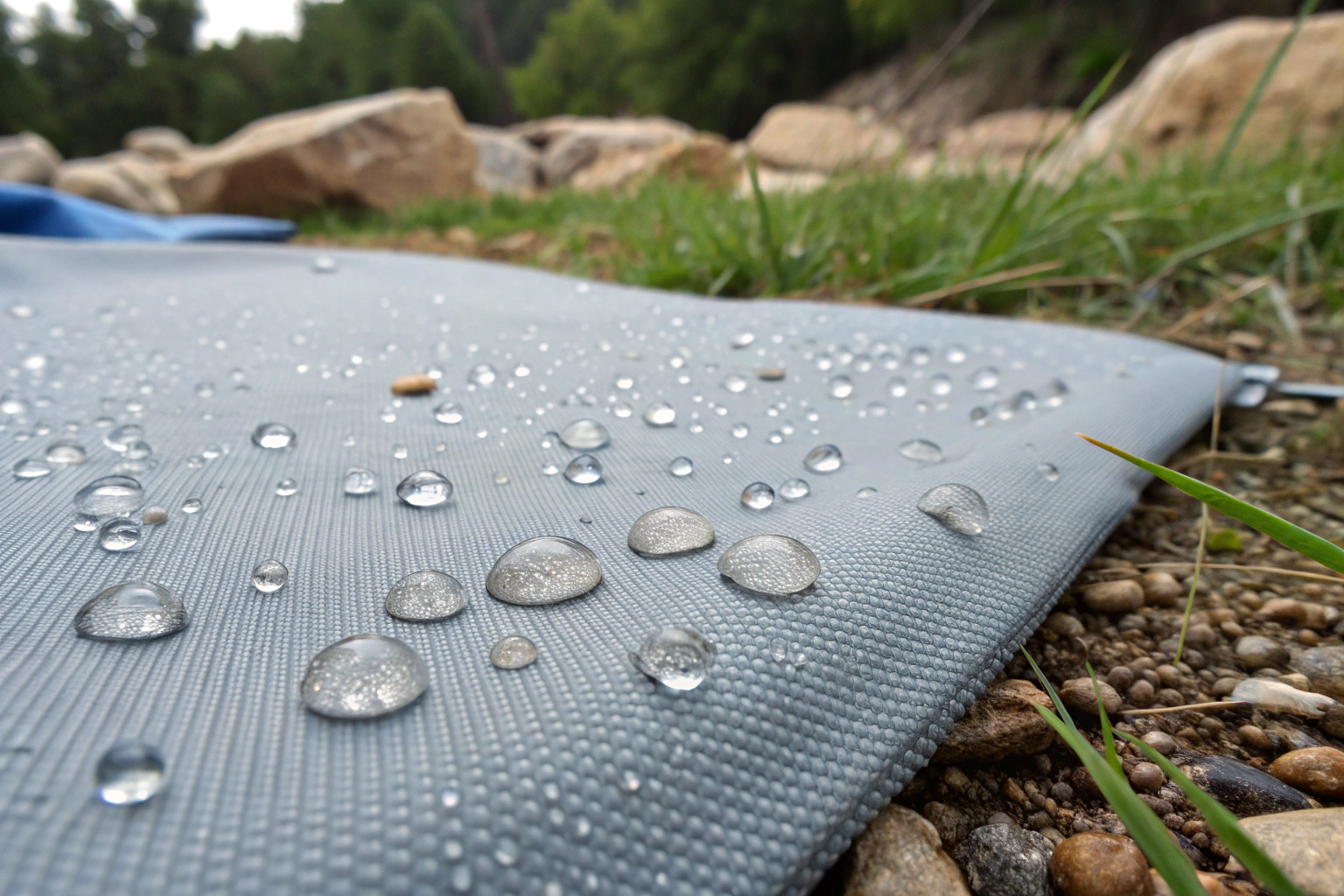Microfiber polyester has quietly become a cornerstone material in the world of water-repellent fabrics. Whether it’s for outdoor gear, performance wear, umbrellas, or even home furnishings, this synthetic fiber offers a level of versatility and resilience unmatched by natural alternatives. But why exactly is microfiber polyester so well-suited for water-repellent applications?
Microfiber polyester is ideal for water-repellent use because of its tightly woven structure, hydrophobic nature, and compatibility with advanced coatings like PU or DWR. It balances softness, durability, and performance, making it a go-to fabric in apparel, sportswear, and technical gear.
In this article, I’ll walk you through what makes microfiber polyester uniquely effective for water-repellent functions—from its fiber structure to its cost-performance advantage—and how we at Fumao Fabric help our clients globally use it to full effect.
What Makes Microfiber Polyester Naturally Water-Resistant?
The performance of microfiber polyester begins at the yarn level. To understand its unique water-repellent qualities, you have to start with how the fibers behave even before any coating is applied.
The fine denier count and tight weave of microfiber polyester creates a dense, smooth surface that naturally repels water by minimizing the gaps between threads. This mechanical resistance is key to baseline water protection.
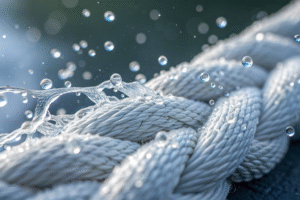
How Does the Fiber Structure Affect Water Behavior?
Microfiber polyester is generally under 1 denier in thickness, making it significantly finer than traditional polyester or cotton. This thinness allows it to be woven more densely, limiting the ability of water droplets to penetrate. According to ScienceDirect, the resulting surface tension pushes water droplets to bead rather than soak.
Additionally, the synthetic nature of polyester is inherently hydrophobic. Compared to natural fibers like cotton, which absorb moisture, polyester repels it. When you combine the material properties with a tight weave, you get water resistance even before treatments like DWR (Durable Water Repellent).
Does Fabric Weight Impact Water Resistance?
Yes, and microfiber polyester excels here too. Lightweight versions like 75D or 100D twill or pongee can deliver strong repellency while remaining breathable and soft. This makes it a favorite for applications like windbreakers or packable raincoats, which require both function and comfort. Learn more about this from Outdoor Industry Association.
How Do Coatings Enhance Water-Repellency of Microfiber?
While microfiber polyester has some natural water-resistance, coatings are what turn it from water-resistant to fully water-repellent or waterproof.
Coatings like DWR, PU, or TPU significantly enhance the water-repellent performance of microfiber polyester by sealing surface pores, reducing capillary action, and creating slick hydrophobic finishes.
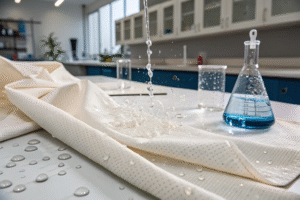
What Are the Most Common Coating Options?
Here’s a quick table comparing key coatings used on microfiber polyester:
| Coating Type | Features | Best Use Case |
|---|---|---|
| DWR | Breathable, water-beading | Outdoor jackets |
| PU (Polyurethane) | Waterproof, flexible | Tents, luggage |
| TPU | Eco-friendly, strong adhesion | Baby gear, medical fabric |
Our coating factory at Fumao applies eco-compliant PU and DWR coatings meeting OEKO-TEX and REACH standards. For clients in the U.S. and Europe, this compliance is often necessary to meet import requirements. More about coatings can be found at Textile Learner.
How Do You Test Coating Effectiveness?
We rely on CNAS-accredited lab tests, which include:
- AATCC 22 for spray rating.
- Hydrostatic pressure test (ISO 811).
- Wash durability after 10, 20, and 50 cycles.
You can learn more about these standards from SGS, which is a global leader in fabric performance testing.
What Are the Popular Applications for Water-Repellent Microfiber?
Microfiber polyester isn’t just for jackets. Its versatility and cost efficiency have made it a staple in countless consumer and industrial products. From fashion to function, the use cases keep expanding.
Water-repellent microfiber polyester is widely used in windbreakers, bags, umbrellas, medical textiles, hotel linens, and automotive interiors due to its lightweight, cost-effective, and durable characteristics.
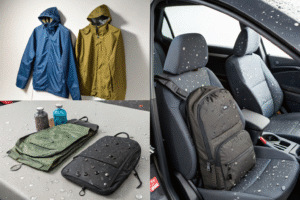
Why Is It Ideal for Apparel and Sportswear?
Thanks to its soft touch, wrinkle resistance, and breathability when properly finished, microfiber polyester is widely adopted in:
- Windbreakers and shell jackets
- Running shorts and track pants
- Rain ponchos and training uniforms
At Fumao Fabric, our microfiber peach twill and pongee are among the top sellers to brands specializing in eco-conscious athleticwear. Learn how leading retailers like Decathlon integrate similar fabrics into their designs.
How Does It Perform in Non-Apparel Uses?
Microfiber polyester also finds a place in:
- Umbrellas and canopies (due to stiffness and quick-drying)
- Travel backpacks and accessories
- Hospital bed sheets and pillow protectors
We supply anti-mite, anti-static, and laminated microfiber to home goods importers in Germany and the U.S. who require bulk waterproof fabric with BSCI audits. Check out examples from OEKO-TEX certified vendors.
How Does It Compare to Other Water-Repellent Fabrics?
With so many options on the market—nylon, PVC, cotton blends—it’s fair to ask where microfiber polyester stands in comparison.
Microfiber polyester stands out for its balance of water repellency, durability, softness, and cost. Compared to nylon, it’s more affordable and less prone to wrinkling. Compared to cotton, it’s lighter, faster-drying, and doesn’t absorb water.
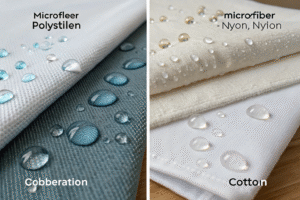
Is It Better Than Nylon?
| Property | Microfiber Polyester | Nylon |
|---|---|---|
| Water Repellency | Excellent with DWR | Excellent |
| Weight | Lighter | Slightly heavier |
| Price | Lower | Higher |
| UV Resistance | Higher | Lower |
| Wrinkle Resistance | Strong | Moderate |
Performance Days showcases how microfiber outpaces nylon in price-per-performance for activewear, especially in Europe.
Is Cotton Still a Contender?
Not really, for water-repellent use. While cotton can be waxed or treated, it still absorbs water over time and dries slower. Microfiber polyester outperforms in:
- Drying time (3x faster).
- Weight retention after rain (much lower).
- Durability under sun exposure (higher UV tolerance).
Check side-by-side durability data via Texpedia.
Conclusion
If your business depends on weather-proof fabrics—whether for outerwear, accessories, or industrial applications—microfiber polyester is a proven performer. Its combination of natural hydrophobicity, tight weave, compatibility with coatings, and long-term durability make it a powerful material that continues to dominate water-repellent categories.
At Fumao Fabric, we help customers like Ron in the U.S. find the right microfiber polyester blends, coatings, and finishes for their target use. We manage everything from sampling and testing to packaging and global delivery, with GRS and OEKO-TEX certifications as standard.
Looking to add microfiber-based water-repellent textiles to your product line? Reach out to our Business Director Elaine at elaine@fumaoclothing.com to discuss your next project. We’re here to help you move faster, safer, and smarter in every drop of rain.

